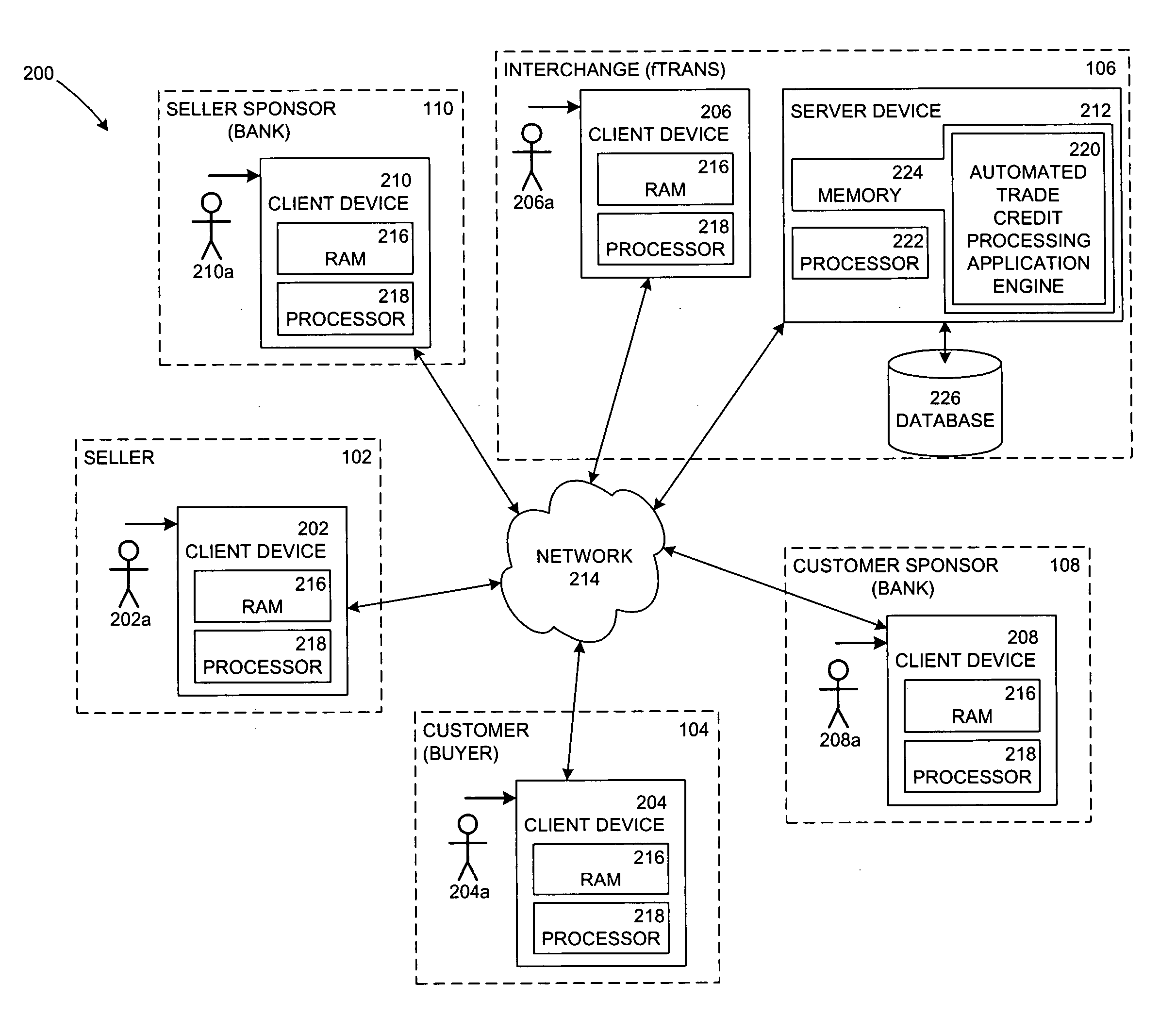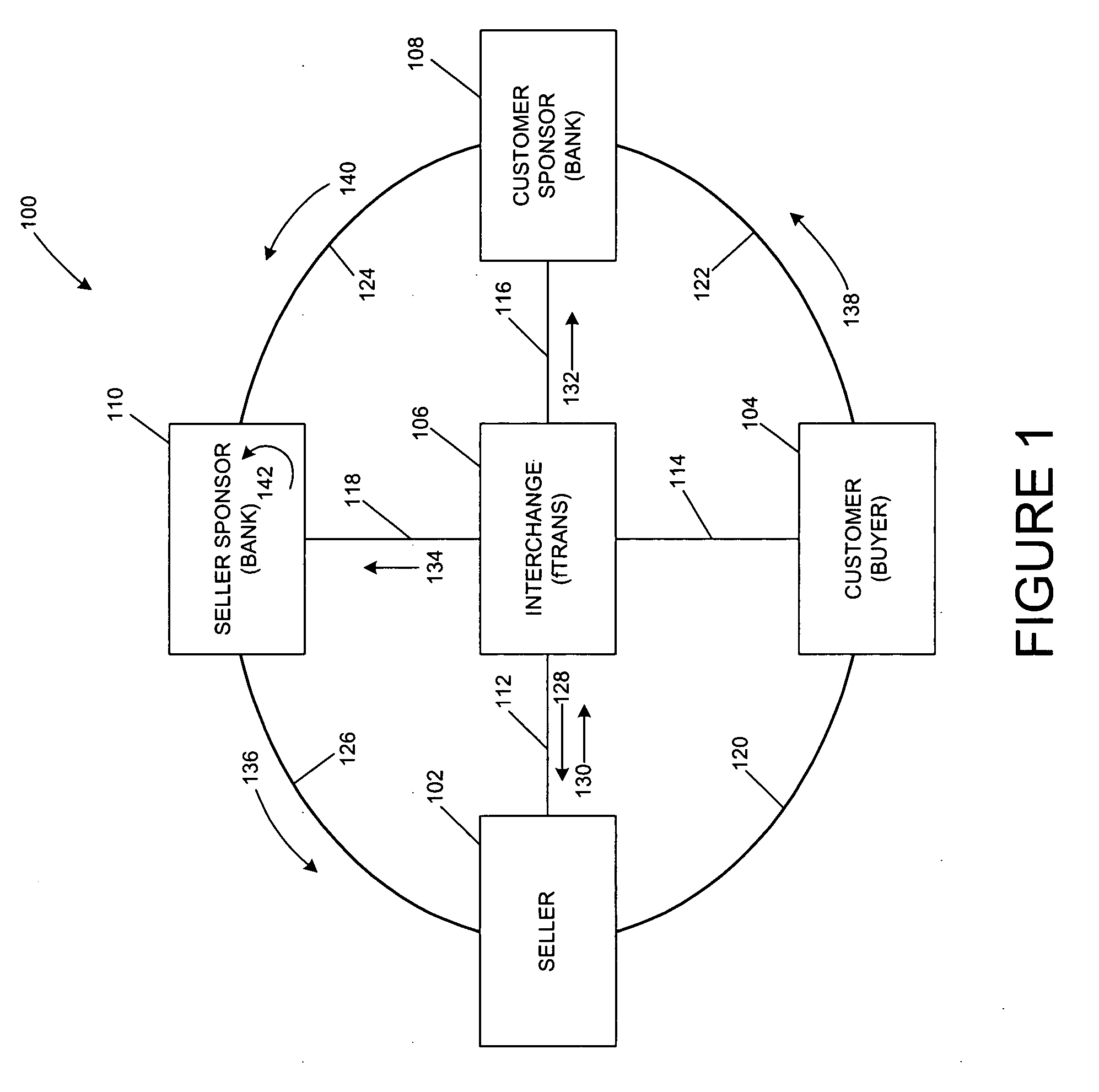Systems and methods for automated processing, handling, and facilitating a trade credit transaction
a trade credit and automated processing technology, applied in the field of system and method for processing trade credit transactions, can solve the problems of retailers, large and small, endured the considerable risk and burden of carrying credit of their customers, and achieved the effects of high security and liquid collateral, outsourcing the burden and risk of extending credit to their customers, and increasing cash flow
- Summary
- Abstract
- Description
- Claims
- Application Information
AI Technical Summary
Benefits of technology
Problems solved by technology
Method used
Image
Examples
Embodiment Construction
[0056] Referring now to the drawings in which like numerals indicate like elements throughout the several figures, FIG. 1 illustrates a process flow of information and payments among financial institutions, a seller, and a customer during the processing, handling, and facilitating of a trade credit transaction in accordance with an embodiment of the invention. In particular, the process 100 shown illustrates automated information and payment flows between various entities during a trade credit transaction when a customer purchases a good, service, and / or intangible from a seller using trade credit.
[0057] In the embodiment shown, the seller 102 and customer 104 are business entities in a transaction with each other, such as a seller and a buyer. For example, the seller 102 can be a business selling a good to the customer 104. In another example, the seller 102 can be a business selling a service to the customer 104. In another example, the seller 102 can be a business selling an int...
PUM
 Login to View More
Login to View More Abstract
Description
Claims
Application Information
 Login to View More
Login to View More - R&D
- Intellectual Property
- Life Sciences
- Materials
- Tech Scout
- Unparalleled Data Quality
- Higher Quality Content
- 60% Fewer Hallucinations
Browse by: Latest US Patents, China's latest patents, Technical Efficacy Thesaurus, Application Domain, Technology Topic, Popular Technical Reports.
© 2025 PatSnap. All rights reserved.Legal|Privacy policy|Modern Slavery Act Transparency Statement|Sitemap|About US| Contact US: help@patsnap.com



